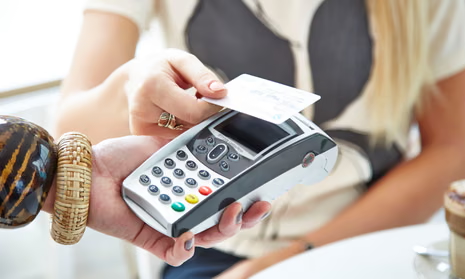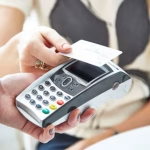The Subtle Psychology of Spending Without Cash
Think about the last time you tapped your card or phone to pay for something. Maybe it was a coffee, an online order, or even a big-ticket purchase. Chances are, it felt almost effortless — fast, smooth, and painless. That’s the allure of a cashless world. But beneath the convenience lies a psychological twist: the easier it feels to spend, the harder it becomes to control it.
Cashless spending has transformed how people interact with money. Credit cards, digital wallets, and contactless payments have made transactions nearly frictionless. Yet, this very ease comes at a cost. Without the physical act of handing over cash, many lose the emotional connection to spending. This disconnect can subtly lead to overspending, impulse buying, and even debt accumulation.
For those who’ve found themselves struggling to manage that invisible flow of digital spending, resources like National Debt Relief can help rebuild balance and control. Because while technology has simplified payments, it has also complicated the psychology of financial awareness.
The Disappearing “Pain of Paying”
When you pay with cash, you feel the transaction. You hand over bills, receive change, and see your wallet get thinner. This tangible experience triggers what psychologists call the “pain of paying” — a mild psychological discomfort that comes with parting from money. It serves as a natural spending brake, reminding you that your resources are finite.
Cashless payments remove that barrier. When you swipe, tap, or click, the process is abstract. The transaction feels distant, almost unreal, and the pain of paying disappears. According to a study published in the Journal of Consumer Research, people tend to spend up to 100% more when using cards instead of cash. The act of paying becomes so detached that it no longer feels like “losing” money, just completing an action.
Digital transactions, while efficient, blur the line between affordability and accessibility. You might not feel the hit of a purchase until the credit card bill arrives — and by then, the emotional moment has long passed.
The Emotional Distance of Digital Money
Cash feels personal. You can see it, touch it, and watch it leave your hands. Digital money, on the other hand, is invisible. It’s just numbers on a screen. This lack of tangibility creates emotional distance, making it easier to justify spending on things you don’t necessarily need.
The Federal Reserve Bank of San Francisco found that cash now accounts for less than 20% of all payments in the U.S., a number that continues to decline each year. This shift toward digital spending changes how we perceive value. With no physical exchange, money becomes less “real” — a concept psychologists call the “decoupling effect.”
This emotional separation weakens spending restraint. For instance, swiping for a $200 dinner feels far less impactful than handing over two crisp $100 bills. That psychological gap can encourage impulsive behaviors, especially when paired with social pressure or marketing tactics.
The Speed Factor: Instant Gratification Reinforced
Cashless payments don’t just feel easier — they’re faster. And speed matters. The quicker a transaction happens, the less time you have to reconsider it. That’s why retailers love digital payments: they reduce checkout friction and increase total sales.
Instant gratification is at the heart of cashless spending. When you make a purchase online or in-store with a single tap, the brain’s reward center lights up before logic can catch up. This rush of dopamine — the same neurotransmitter linked to pleasure and motivation — reinforces the habit. Over time, the brain associates cashless spending with positive feelings, making restraint even harder.
In contrast, cash-based spending introduces small, deliberate pauses. You have to count, hand over, and sometimes even feel the sting of watching your money leave. These micro-moments provide just enough time for reflection — “Do I really need this?” — which can prevent impulse decisions.
Convenience Comes With Cognitive Costs
There’s no denying the convenience of digital payments. They save time, reduce the need to carry cash, and make managing bills easier. But convenience can also dull financial awareness. When transactions happen invisibly, tracking becomes more difficult, and spending habits can spiral out of sight.
This is especially true when multiple payment methods are involved — credit cards, PayPal, Apple Pay, and buy-now-pay-later services. Each creates another layer of detachment from the actual cost. Without intentional tracking, it’s easy to underestimate how much you’re spending monthly.
Financial educators at The Consumer Financial Protection Bureau (CFPB) emphasize that awareness is the antidote. They recommend reviewing bank statements weekly and using budgeting tools that categorize spending automatically. By bringing visibility back to your financial activity, you reintroduce mindfulness into your money habits.
How to Reconnect With Your Spending
Mindfulness doesn’t mean giving up digital payments — it means using them consciously. Here are a few ways to regain control in a cashless world:
- Track every transaction. Use apps or spreadsheets to monitor where your money goes. When you see totals accumulate, the emotional awareness returns.
- Create digital “speed bumps.” Remove saved payment details or enable two-step confirmations to slow down online spending.
- Set limits. Designate specific cards or accounts for certain types of purchases — groceries, entertainment, etc. This separation helps visualize spending categories.
- Practice a 24-hour rule. Before making non-essential purchases, wait a day. The delay often reveals whether the desire was emotional or practical.
- Use cash for problem areas. If you consistently overspend in certain categories, try switching back to physical cash for those transactions.
Reconnecting with your money requires reintroducing friction — small moments that restore the link between choice and consequence.
The Balance Between Ease and Awareness
The future of money is undoubtedly cashless. From mobile wallets to biometric payments, convenience will only grow. But with that evolution comes the need for greater intentionality. The solution isn’t to reject technology but to pair it with awareness.
Cashless systems have revolutionized commerce and accessibility, but they’ve also reshaped our emotional relationship with money. The more abstract payment becomes, the easier it feels — and the easier it feels, the faster it can slip away.
By staying conscious of this psychological trade-off, you can enjoy the benefits of digital spending without losing financial discipline. Recognizing that every swipe, tap, or click represents real effort and value helps bridge the gap between convenience and control.
Cashless spending feels easier because it hides the true cost — not in dollars, but in awareness. When you bring that awareness back, you don’t just regain control of your finances. You reclaim your relationship with money itself.







